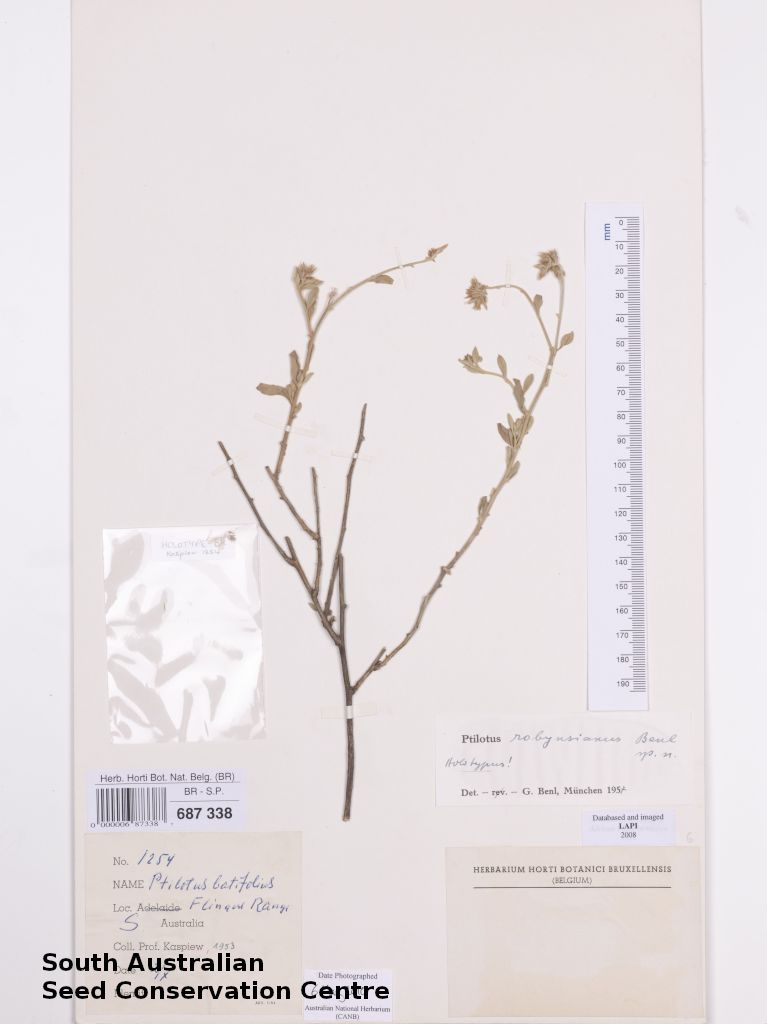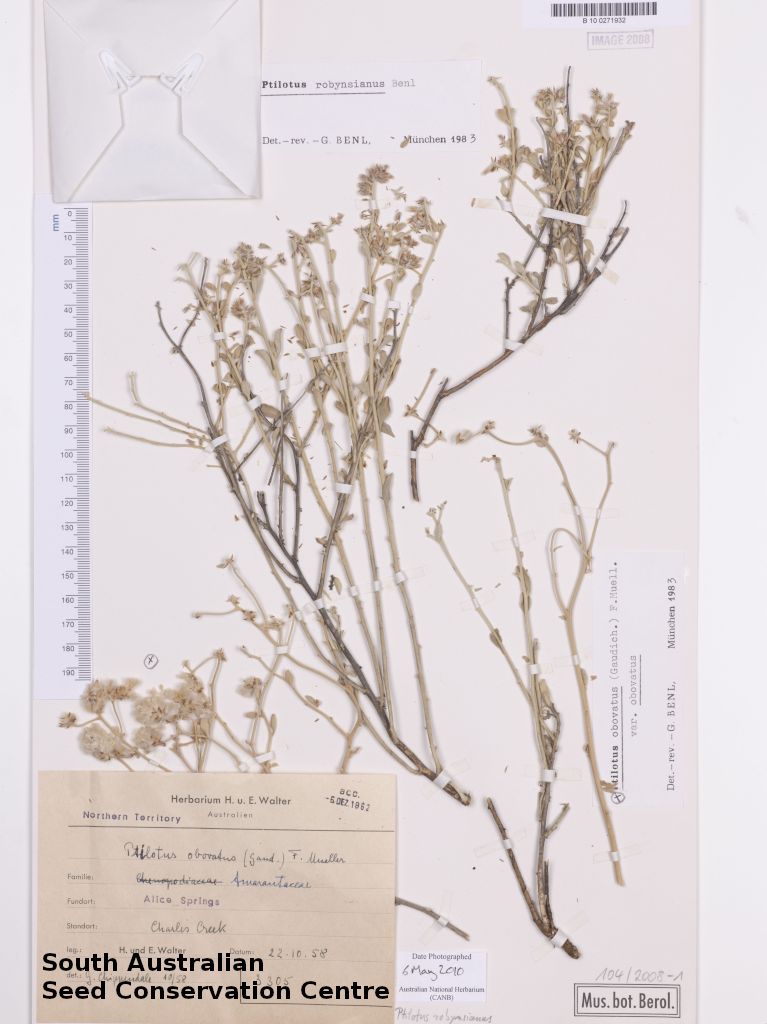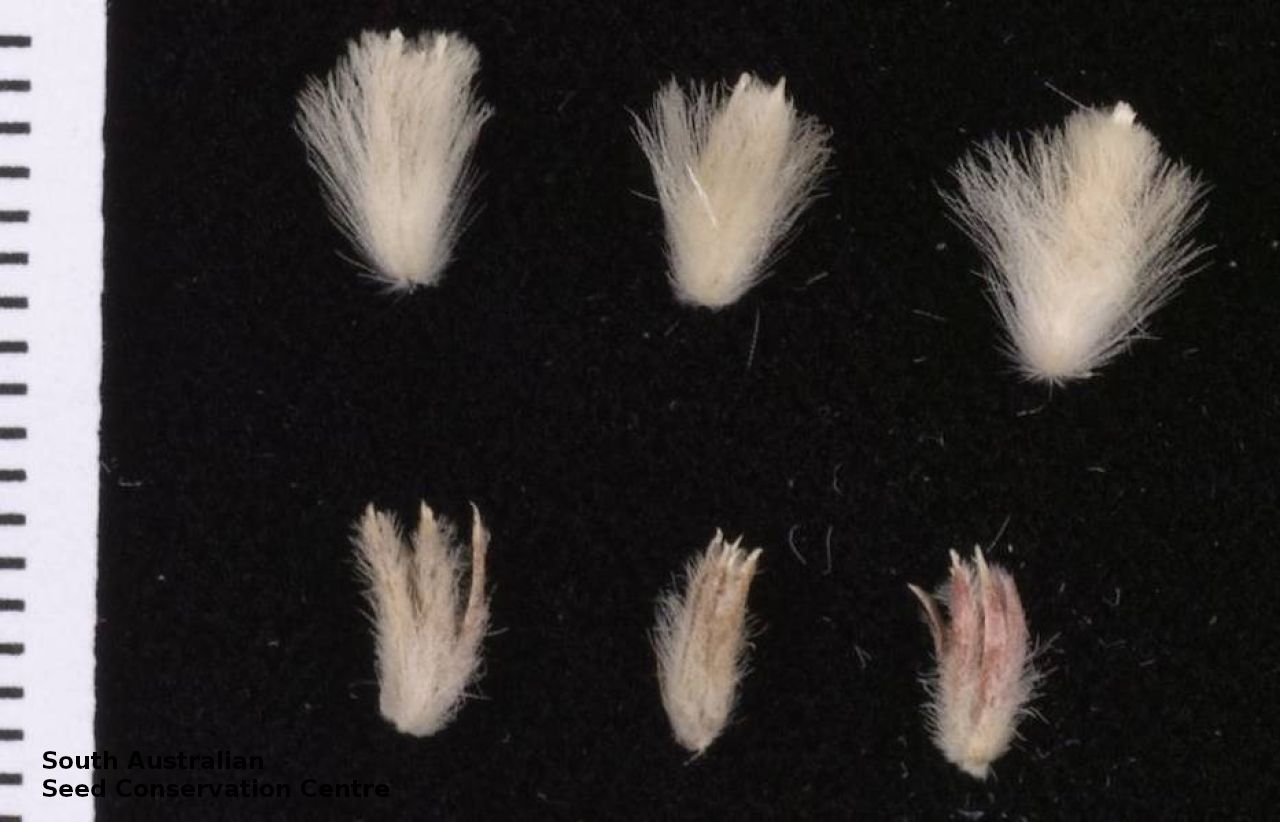




Etymology
Ptilotus from the Greek 'ptilotos' meaning feathered or winged; referring to the hairy flowers. Robynsianus named after Frans Hubert Edouard Arthur Walter Robyns (1901-1986), a the Belgian botanist and director of the National Botanic Garden of Belgium 1932–1966), where he shaped the transfer of the institute from the site in Brussels to the Bouchout Domain in Meise.
Distribution and status
Only known from two collections from the 1950’s, one from the Finders Ranges in South Australia and the other is from Alice Spring in the Northern Territory. Native. Very rare or presumed extinct. Very similar to the common Ptilotus obovatus and may be easily overlooked by collectors.
Herbarium region: Flinders Ranges
NRM region: South Australian Arid Lands
AVH map: SA distribution map (external link)
Plant description
Shrubs, sometimes rounded, to 20 cm high with stems and leaves densely hairy, hairs persisting with age. Leaves obovate or elliptic, to 20 mm long and 5 mm wide, bases cuneate or attenuate. Flower-spikes terminal or pseudo-terminal, an irregular, compound corymb, to 0.7 cm long, with 9 pink to purple flowers. Bract to 3.6 mm long, bracteoles to 3 mm long, both with apices acute, perianth to 6.5 mm long, pink or purple, tepals with sparse, subverticillate or verticillate hairs to 1 mm long basally, remainder glabrous or with some subverticillate or verticillate hairs to 0.6 mm long, with sparse, verticillate hairs to 0.2 mm long beneath, apices erose, acute, fertile stamens 2 or 3, filaments to 3.2 mm long, staminodes 2 or 3, filamentous or tepal-like, ovary hairy apically; style 2.3–2.6 mm long, eccentric. Flowers in October. Although vegetatively very close to P. obovatus, this species differs in its smaller less hairy flowers, and having staminodes which are tepal-like, the flowers often appearing to have up to 8 tepals. Fruits are white to purplish head containing numerous long papery and hairy fruits, each containing one seed. Seed embryo type is peripheral.
Seed collection and propagation
Collect seeds between November and January. Be very careful when collecting this species as the fruits contain fine hairs that may cause an allergic reaction for some people. Collect the fruit heads when dried to a white to pale straw colour. Each fruit should come off the head easily when fingers are rubbed up the stem. Collect more fruits than required as not all fruits contain viable seed. Be very careful when cleaning this species as the fruits contain fine hairs that may cause an allergic reaction for some people. To clean, rub the fruit heads gently to dislodge the seed at the base of each fruit. Use a sieve to separate the unwanted material. Store the seeds with a desiccant such as dried silica beads or dry rice, in an air tight container in a cool and dry place. Seeds are non-dormant, viable seed should germinate readily.